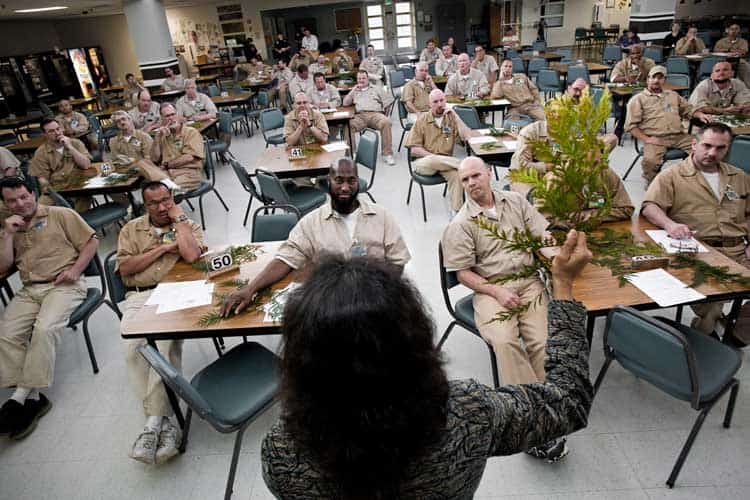In 2013, the Justice Department reported that incarcerated inmates who participated in correctional education programs had 43 percent lower odds of returning to prison than inmates who did not. Recognizing the need for these programs, the University of Utah has partnered with the Salt Lake County Jail to bring science education to inmates each month beginning March 24, 2014.
“Bringing lectures and projects delivered by scientists and engineers to incarcerated individuals is an effective way to provide experiential learning, job training and inspiration to a group of citizens who lack access to science education,” said Nalini Nadkarni, professor of biology and director of the Center for Science and Mathematics Education at the U. “These programs benefit inmates during incarceration and after their release by helping them rebuild their lives through education, and thus, helping society as a whole.”
The Initiative to Bring Science Programs to the Incarcerated, or INSPIRE, forges collaborations with scientists, jail staff, students and community partners to provide lectures, workshops, activities and hands-on science projects that focus on science, math and conservation.
“Providing science and math education in the jail will stimulate the minds and change thought processes of our prisoners,” said Captain Matt Dumont, Salt Lake County Sheriff’s Office Corrections Bureau. “Learning about things like energy efficiency, horticulture, plants and wildlife will increase their understanding of the world around them and help them engage in society after release. We look forward to seeing the impact of this initiative.”
During the opening lecture on March 24, Nadkarni, a forest ecologist, will discuss the diverse relationships that exist between trees and humans in Utah and around the world. She will also speak about her research involving rainforest canopies and provide information about jobs and professions related to forest science, such as arboriculture and landscaping. Topics of future lectures by other U faculty include biology in microorganisms, applications of mathematics, chemistry of air quality and other STEM topics.
“We are going to be putting a strong emphasis not only on the ‘basic science’ that we present, but also on how it might be directly applied to increase the probability of employment and usefulness to society and the environment after inmates are released,” added Nadkarni.
In 2003, Nadkarni started a similar program in the state of Washington in a single minimum-security prison, which has since expanded to include 12 state prisons in Washington, and numerous other prisons and universities in nine additional states. Since its inception in Washington, the programs have saved the prison system more than $1 million through reduced resource consumption and waste as offenders participate in sustainable operations and conservation projects.
The University of Utah, in collaboration with Evergreen State College, was awarded a $250,000 grant by the National Science Foundation to develop a national network to bring science to the incarcerated around the country and to develop INSPIRE in Utah.



“The more opportunities we in prison have to learn to value education and see possibilities for ourselves, the greater the chance we will break the cycle of incarceration not just for ourselves but for future generations to come.” – Chrisfino Kenyatta Leal, 2011 valedictorian of the Prison University Project. In my opinion, this initiative can lay the path towards ending the never ending cycle of crime.
Today, an estimated 2.3 million people are incarcerated in the United States. Taken together, states spend over $52 billion annually on corrections and related activities. According to the Bureau of Justice Statistics, the average annual operating cost per incarcerated person in 2001 was $22, 650. The annual spending per student for a standard state university such as the State University of New York (SUNY) is below $8, 000. There is a significant cost difference between corrections and education spending.
Not only are the prisoner’s lives changed due to this initiative but those of their children too. In the first decade of the twenty-first century, more than half of all people behind bars had minor children at the time of their incarceration. Most incarcerated parents had lived with their children prior to incarceration and expected to be reunited with them upon release. A college education has far-reaching capacity to set a good example for these children. A study of the Bedford Hills College Program found that children of the women enrolled in the prison college program expressed pride in their mothers’ academic achievements, were inspired to take their own education more seriously and were more motivated to attend college themselves. When children are inspired by their parents to take education more seriously, they too begin to see viable alternatives to dropping out of school and entering a life of crime, thus breaking a harrowing cycle of intergenerational incarceration.